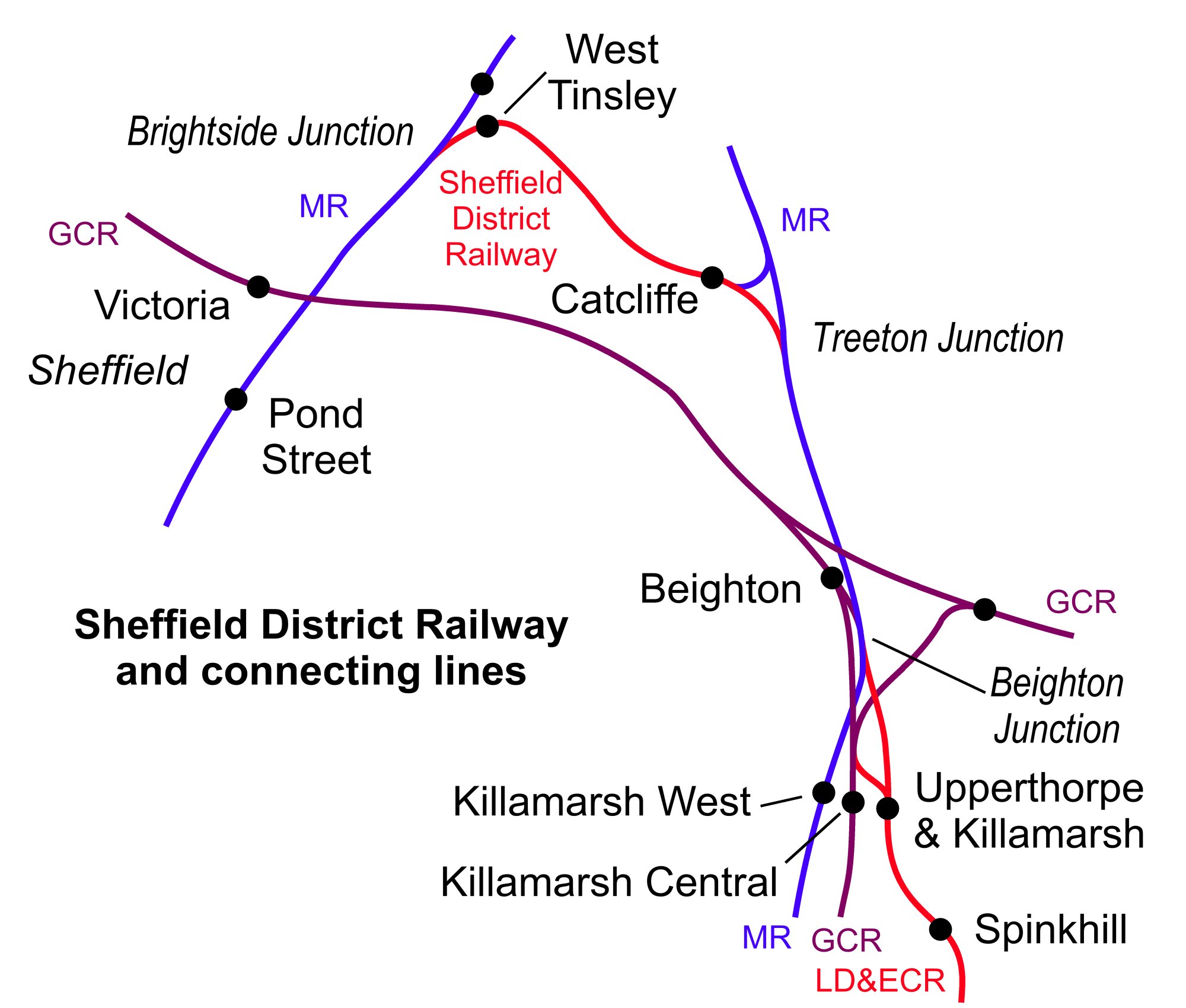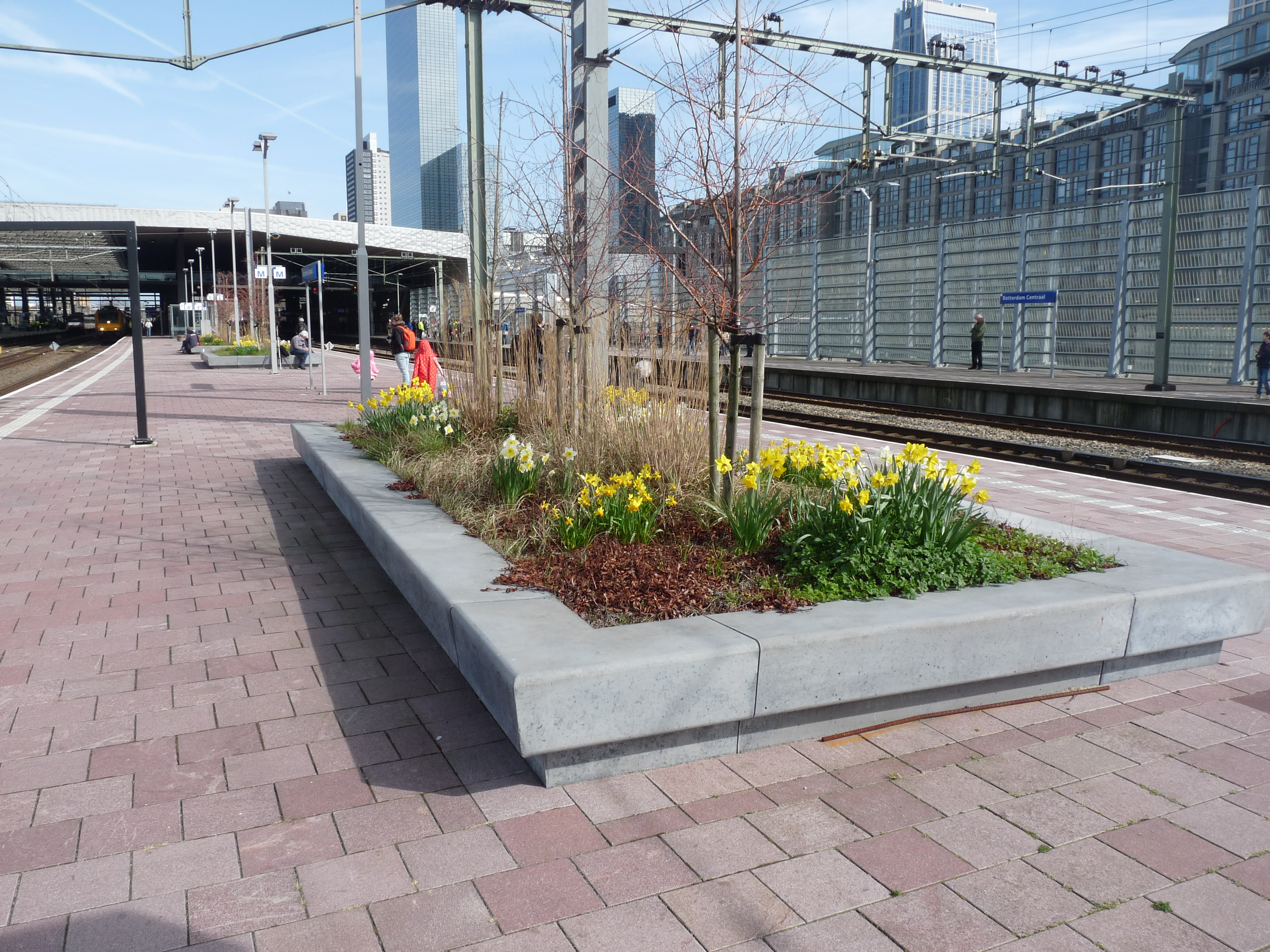|
Killamarsh Central Railway Station
Killamarsh Central is a former railway station in Killamarsh, Derbyshire, England. Ambiguity Three stations served the village, all of which started as plain "Killamarsh": * on the former Midland Railway "Old Road" from to , * on the former LD&ECR's Beighton Branch, and * Killamarsh Central which is the subject of this article. History The station was opened in 1892 by the Manchester, Sheffield and Lincolnshire Railway when it began to build south into Derbyshire. Despite its name Killamarsh Central Station was on the western edge of Killamarsh as were all of the three stations in the village. It was renamed 'Central' because it was the centre of the three stations which served the village and also because it was on the old Great Central Main Line which ran between London Marylebone and Manchester via . The station opened on 1 June 1892 as Killamarsh. It was renamed Killamarsh Central by British Railways on 25 September 1950 and closed on 4 March 1963. Removal of the ... [...More Info...] [...Related Items...] OR: [Wikipedia] [Google] [Baidu] |
Killamarsh
Killamarsh is a village and civil parish in North East Derbyshire, England, bordering Rotherham to the north and Sheffield to the north-west. Killamarsh is surrounded by, in a clockwise direction from the north, Rother Valley Country Park, the village of Wales, South Yorkshire, Kiveton, Woodall, Harthill, Barlborough, Spinkhill, Renishaw, Eckington, and the (former Derbyshire) Sheffield suburbs of Oxclose, Halfway and Holbrook. The name 'Killamarsh' is first attested in the Domesday Book of 1086, where it appears as ''Chinewoldemaresc''.''Domesday Book: A Complete Translation''. London: Penguin, 2003. p.753 and 1365 It appears as ''Kinewaldesmers'' in the Charter Roll for 1249. The name means 'Cynewald's marsh'. History Domesday records Killamarsh as belonging to Hascoit Musard and being valued at 12 pence. The Grade II* listed parish church of St Giles was built between the 12th and 15th centuries using sandstone. Additions were made in 1895 by J. M. Brooks in mag ... [...More Info...] [...Related Items...] OR: [Wikipedia] [Google] [Baidu] |
Marylebone Station
Marylebone station ( ) is a Central London railway terminus and connected London Underground station in the Marylebone area of the City of Westminster. On the National Rail network it is also known as London Marylebone and is the southern terminus of the Chiltern Main Line to Birmingham. An accompanying Underground station is on the Bakerloo line between Edgware Road and in Transport for London's fare zone 1. The station opened on 15 March 1899 as the London terminus of the Great Central Main Line (GCML), the last major railway to open in Britain for 100 years, linking the capital to the cities of Leicester, Sheffield and Manchester. Marylebone was the last of London's main line termini to be built and is one of the smallest, opening with half of the platforms originally planned. There has been an interchange with the Bakerloo line since 1907, but not with any other lines. Traffic declined at Marylebone station from the mid-20th century, particularly after the GCML closed ... [...More Info...] [...Related Items...] OR: [Wikipedia] [Google] [Baidu] |
Former Great Central Railway Stations
A former is an object, such as a template, gauge or cutting die, which is used to form something such as a boat's hull. Typically, a former gives shape to a structure that may have complex curvature. A former may become an integral part of the finished structure, as in an aircraft fuselage, or it may be removable, being using in the construction process and then discarded or re-used. Aircraft formers Formers are used in the construction of aircraft fuselage, of which a typical fuselage has a series from the nose to the empennage, typically perpendicular to the longitudinal axis of the aircraft. The primary purpose of formers is to establish the shape of the fuselage and reduce the column length of stringers to prevent instability. Formers are typically attached to longerons, which support the skin of the aircraft. The "former-and-longeron" technique (also called stations and stringers) was adopted from boat construction, and was typical of light aircraft built until the ad ... [...More Info...] [...Related Items...] OR: [Wikipedia] [Google] [Baidu] |
Shepperton
Shepperton is an urban village in the Borough of Spelthorne, Surrey, approximately south west of central London. Shepperton is equidistant between the towns of Chertsey and Sunbury-on-Thames. The village is mentioned in a document of 959 AD and in the Domesday Book. In the early 19th century, resident writers and poets included Rider Haggard, Thomas Love Peacock, George Meredith and Percy Bysshe Shelley, who were attracted by the proximity of the River Thames. The river was painted at Walton Bridge in 1754 by Canaletto and in 1805 by Turner. Shepperton Lock and nearby Sunbury Lock were built in the 1810s to facilitate river navigation. Urbanisation began in the latter part of the 19th century, with the construction in 1864 of the Shepperton Branch Line, which was sponsored by William Schaw Lindsay, the owner of Shepperton Manor. Its population rose from 1,810 residents in the early 20th century to a little short of 10,000 in 2011. Lindsay had hoped to extend the railw ... [...More Info...] [...Related Items...] OR: [Wikipedia] [Google] [Baidu] |
Ian Allan (publisher)
Ian Allan, OBE (29 June 1922 – 28 June 2015) was a publisher who specialised in transport titles through his company Ian Allan Publishing. Early life Allan was born at Christ's Hospital independent school, Horsham, Sussex, where his father, G.A.T. Allan, was clerk to the school. He was educated at St Paul's School, London. At the age of 15, he had a leg amputated following an accident during Officers' Training Corps exercises. His hopes of joining the Southern Railway as a cadet were dashed as result of his failure to pass the school certificate examination. He was nevertheless offered a position in the Southern Railway's Public Relations Office at by Sir John Elliot. He stayed at the Southern Railway handling public enquiries including ones from railway enthusiasts and producing the company's magazine. Publishing career ABC guides With the help of S.K. Packham, Chief Clerk in the Public Relations Office, Allan compiled a notebook with all the names, numbers, classe ... [...More Info...] [...Related Items...] OR: [Wikipedia] [Google] [Baidu] |
Renishaw Central Railway Station
Renishaw Central is a former railway station in Renishaw, Derbyshire, England. From its opening the station was named Eckington and Renishaw, but it was renamed "Renishaw Central" in 1950 by British Railways to prevent confusion with the nearby ex-Midland Railway station, also called Eckington and Renishaw. The station was on the Great Central Main Line which ran between and via . It had two platforms with wooden waiting rooms and canopies and a wooden ticket office on an overbridge at the southern end. The station was the junction for a Great Central branch to Renishaw Ironworks. A Midland branch to the ironworks passed under the platforms. There was also a branch to Renishaw Park colliery. Modern times The station has been demolished, but the trackbed forms part of the Central Section of the Trans Pennine Trail The Trans Pennine Trail is a long-distance path running from coast to coast across Northern England entirely on surfaced paths and using only gentle gradie ... [...More Info...] [...Related Items...] OR: [Wikipedia] [Google] [Baidu] |
Beighton Railway Station
Beighton railway station is a former railway station near the village of Beighton on the border between Derbyshire and South Yorkshire, England. Three stations Beighton station existed on three sites at different times: * the first station, believed to have been little more than a halt, was opened by the North Midland Railway when it built its to line, which is now predominantly a freight route. At south of it stood approximately halfway between what is now Beighton Junction and the overbridge which still carries passenger trains east–west between and . This original station was opened when the line opened in June 1840, it was not near to or convenient for the village of Beighton and closed in January 1843. * in 1849 the Manchester, Sheffield and Lincolnshire Railway (MS&LR) completed its Sheffield to Worksop line, which included a branch from just east of to join the North Midland line at what became known as Beighton Junction. They built Beighton's second station a ... [...More Info...] [...Related Items...] OR: [Wikipedia] [Google] [Baidu] |
Trans Pennine Trail
The Trans Pennine Trail is a long-distance path running from coast to coast across Northern England entirely on surfaced paths and using only gentle gradients (it runs largely along disused railway lines and canal towpaths). It forms part of European walking route E8 and is part of the National Cycle Network as Route 62 (referencing the M62 motorway which also crosses the Pennines). Most of the surfaces and gradients make it a relatively easy trail, suitable for cyclists, pushchairs and wheelchair users. The section between Stockport and Barnsley is hilly, especially near Woodhead, and not all sections or barriers are accessible for users of wheelchairs or non-standard cycles. Some parts are also open to horse riding. The trail is administered from a central office in Barnsley, which is responsible for promotion and allocation of funding. However, the twenty-seven local authorities whose areas the trail runs through are responsible for management of the trail within their bo ... [...More Info...] [...Related Items...] OR: [Wikipedia] [Google] [Baidu] |
Footbridge
A footbridge (also a pedestrian bridge, pedestrian overpass, or pedestrian overcrossing) is a bridge designed solely for pedestrians.''Oxford English Dictionary'' While the primary meaning for a bridge is a structure which links "two points at a height above the ground", a footbridge can also be a lower structure, such as a boardwalk, that enables pedestrians to cross wet, fragile, or marshy land. Bridges range from stepping stones–possibly the earliest man-made structure to "bridge" water–to elaborate steel structures. Another early bridge would have been simply a fallen tree. In some cases a footbridge can be both functional and artistic. For rural communities in the developing world, a footbridge may be a community's only access to medical clinics, schools, businesses and markets. Simple suspension bridge designs have been developed to be sustainable and easily constructed in such areas using only local materials and labor. An enclosed footbridge between two buildings is ... [...More Info...] [...Related Items...] OR: [Wikipedia] [Google] [Baidu] |
Railway Platform
A railway platform is an area alongside a railway track providing convenient access to trains. Almost all stations have some form of platform, with larger stations having multiple platforms. The world's longest station platform is at Hubbali Junction in India at .Gorakhpur gets world's largest railway platform ''The Times of India'' The in the United States, at the other extreme, has a platform which is only long enough for a single bench. Among some United States train conductors the word "platform" has entered [...More Info...] [...Related Items...] OR: [Wikipedia] [Google] [Baidu] |
British Railways
British Railways (BR), which from 1965 traded as British Rail, was a state-owned company that operated most of the overground rail transport in Great Britain from 1948 to 1997. It was formed from the nationalisation of the Big Four British railway companies, and was privatised in stages between 1994 and 1997. Originally a trading brand of the Railway Executive of the British Transport Commission, it became an independent statutory corporation in January 1963, when it was formally renamed the British Railways Board. The period of nationalisation saw sweeping changes in the railway. A process of dieselisation and electrification took place, and by 1968 steam locomotives had been entirely replaced by diesel and electric traction, except for the Vale of Rheidol Railway (a narrow-gauge tourist line). Passengers replaced freight as the main source of business, and one-third of the network was closed by the Beeching cuts of the 1960s in an effort to reduce rail subsidies. On privatis ... [...More Info...] [...Related Items...] OR: [Wikipedia] [Google] [Baidu] |








.jpg)